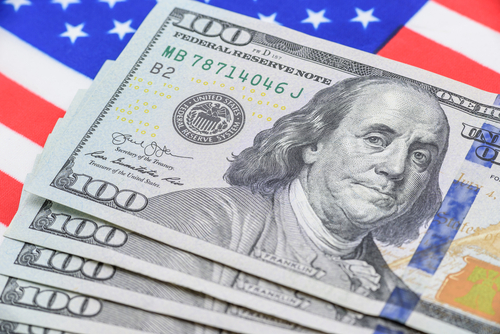
Monetary Policy & Inflation | US

Monetary Policy & Inflation | US
This article is only available to Macro Hive subscribers. Sign-up to receive world-class macro analysis with a daily curated newsletter, podcast, original content from award-winning researchers, cross market strategy, equity insights, trade ideas, crypto flow frameworks, academic paper summaries, explanation and analysis of market-moving events, community investor chat room, and more.
Just about everyone called Wednesday’s FOMC meeting correctly: the Fed hiked interest rates 75bp to 2.25-2.50%. That was the second supersized hike in a row and the steepest pace of hikes since 1994.
But perhaps fewer people called the market reaction. The NASDAQ had its biggest one-day jump since 2020, the dollar dipped, and even bitcoin briefly dipped its nose over $23,000. But why did markets read the meeting as dovish?
The reason was Chair Jerome Powell’s comments. His forward guidance was much less specific than at previous meetings. This is possibly because data prints forced the Fed to break the very specific guidance for the June meeting given at the May meeting. But markets still hung on every word he spoke:
Statements 2 and 3 are somewhat inconsistent, reflecting the Fed’s lack of confidence that 2.5% is already at neutral. But to markets, the message was clear: they think less tightening is in the pipeline. Focusing more on Powell’s dovish comments, they promptly shaved 7bp and 5bp off the end-2022 and end-2023 FFR. The curve partially dis-inverted, with the 10yr yield falling 2bp and 2yr yield 5bp relative to Tuesday’s close.
But we think the market got it wrong.
We think the market is mistaken on both the Fed reaction function and the direction of inflation. Core inflation is sliding, true. But that is because the decline in core goods inflation is offsetting the acceleration in services inflation (Chart 1). With a very tight labor market and residual supply bottlenecks, it is only a matter of time before the reverse becomes true.
Ultimately, we think incoming data prints will drive Fed hikes. With inflation set to accelerate, we expect the Fed to hike another 175 bp by end year and the curve to invert further. After all, Powell also stressed that the Fed remained focused on the inflation part of its mandate, since it could not meet the employment part sustainably ‘without restoring price stability’.
Powell strongly resisted the idea the US was in recession, mainly based on labor market strength. He highlighted that ‘the labor market remained extremely tight’, suggesting ‘aggregate demand remained solid’.
Powell explained the Fed would set its policy stance ‘at a level at which it would be confident that inflation was moving down to 2%’. Inflation returning to 2% would require a period of ‘below trend economic growth’ and ‘some softening of the labor market’. This suggests the Fed wants a marked growth slowdown: Q1 growth was 3.5% based on GDP and 4.6% based on GDI, against trend growth at 1.8% in the June SEP.
Powell further indicated ‘Labor demand was very strong, while labor supply remained subdued’, the latter due partly to an ongoing COVID wave. He added that the alignment between labor demand and supply had to get ‘better’. In this context, although he thought demand was moderating, the path to a soft landing had become ‘more challenging’.
We believe a recession is likely – but in 2023, not 2022.
Spring sale - Prime Membership only £3 for 3 months! Get trade ideas and macro insights now
Your subscription has been successfully canceled.
Discount Applied - Your subscription has now updated with Coupon and from next payment Discount will be applied.